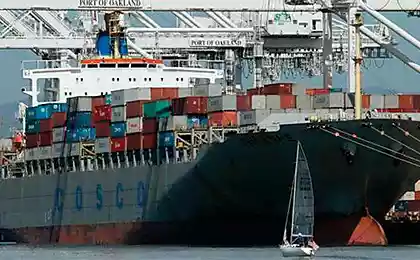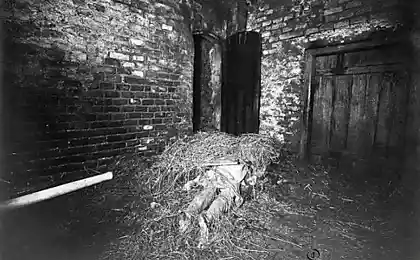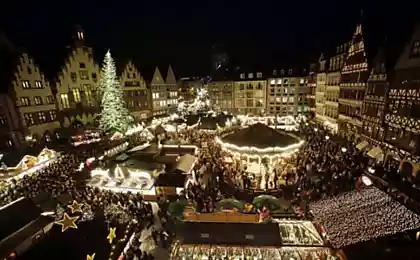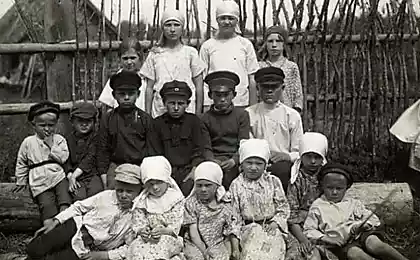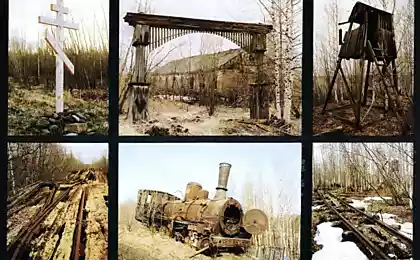763
Night lights of the river port
When in 1937 ended with the construction of the Moscow Canal, the city has a new deep-water route to the Volga River. In Moscow, began to come large fleet, require more handling capacity, which necessitated the construction, along with the construction of the Northern and Western Port, South Port - a major cargo port with powerful transshipment complex for transshipment of direct rail-waterway advanced network access rail tract.
25 ph via Ilya Varlamov
1. Today South Port - this is one of the major Moscow thoroughfares
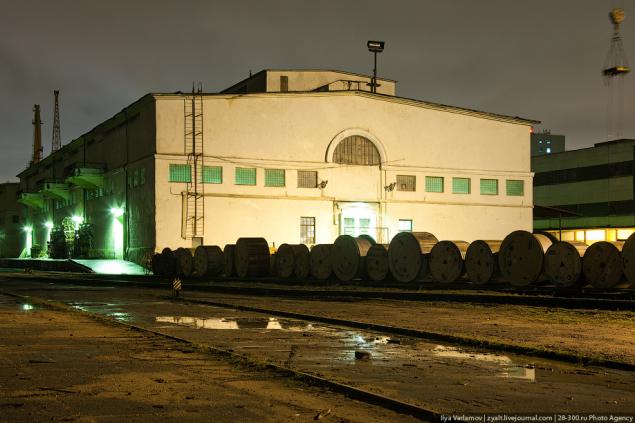
2. As a result of reconstruction Moskvoretskaya river system by the end of the 20s are all available berths were merged into 12 trucks.
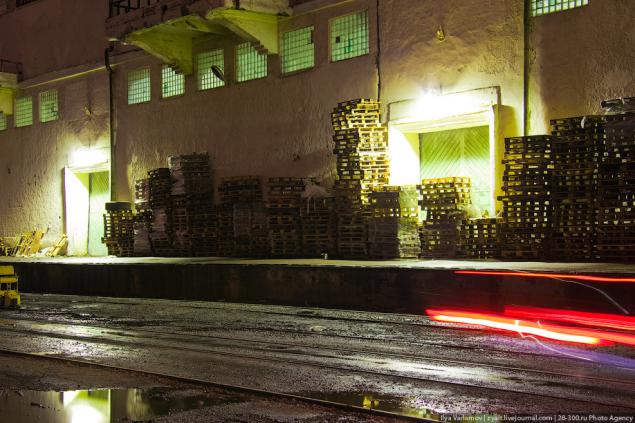
3. The construction of the South Port was conducted in a large South Harbour Moscow River, where the winter could accommodate up to 350 for the repair of ships. However, to build it was very difficult because of the impassable swamps Sukin swamp. As with the creation of all other objects Canal. Moscow, the construction of the Southern ports was carried out by the NKVD Gulag. The whole area of construction has become a "zone." It is shielded by a fence of two rows of barbed wire and put a tower with "the guard." Especially carefully guarded area in which the hospital is now located № 53. There were barracks prisoners.
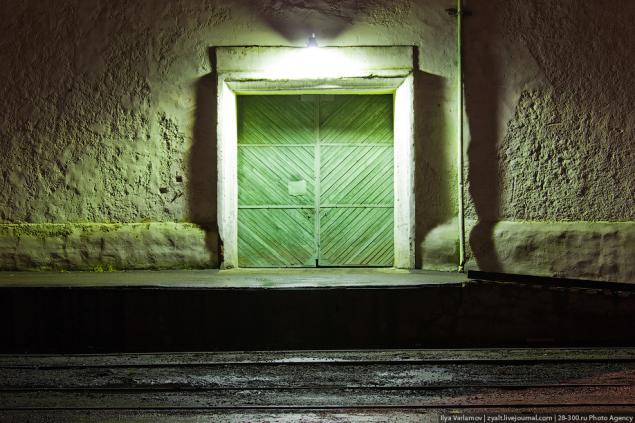
4. Initially, the port has not been mechanized. All shipments to traditional way in Russia - in bags on zapleche. Therefore, the court long idle in port (up to 50% of the total work). With the introduction of the port cargo handling equipment is increasingly mechanized. In the photo the port administration building.
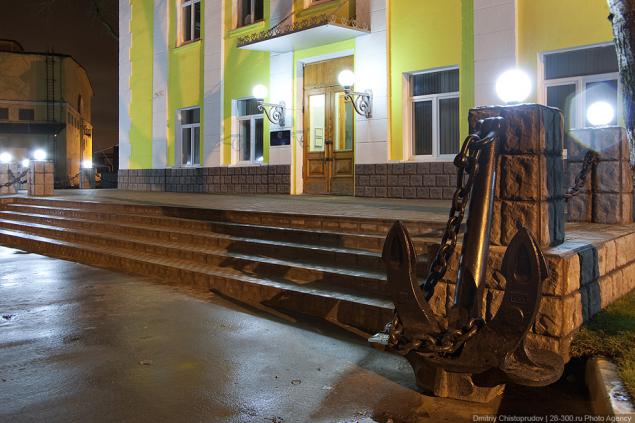
5. The first trial in the South Harbour berths came in the autumn of 1940. They brought Muscovites vegetables and potatoes from the fields near Moscow, and from the banks of the Oka River. During the war every day in Moscow in South Port received grain, food and firewood (10-12 thousand tons per day).
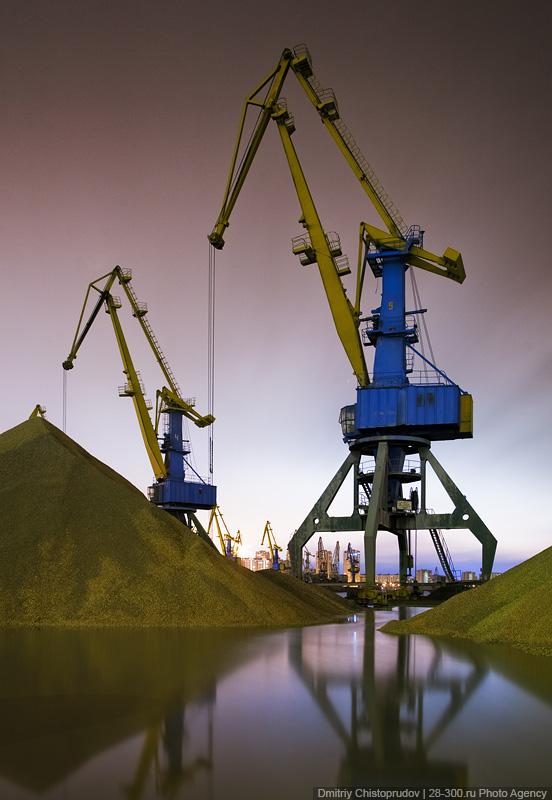
6. When the war began from the port workers in the army were mobilized, almost all porters, machine operators and engineers, they were replaced by their wives and children. Here, on the supply base of the Western Front, came to work after recovering wounded soldiers.
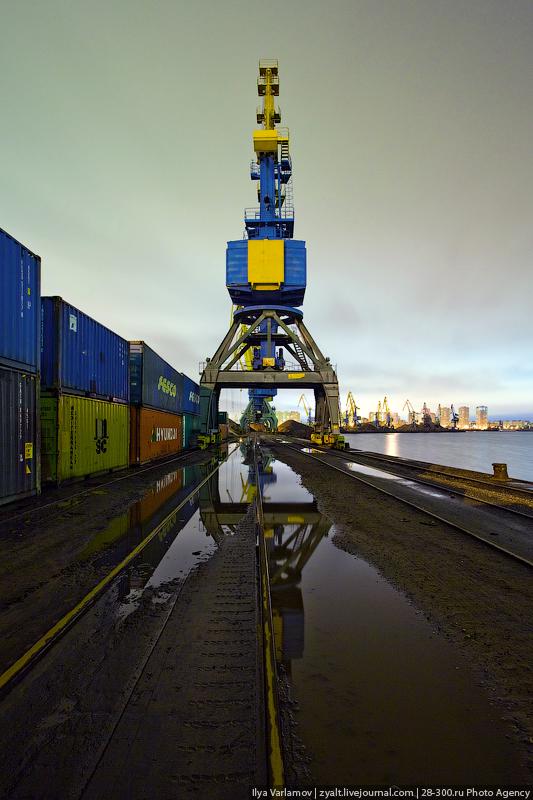
7.
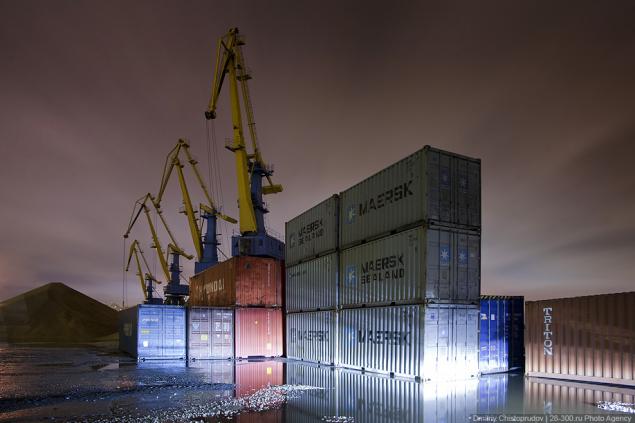
8. The water area of South Port, the widest in the Moscow section of the main river bed. Moscow. The length of 2, 5 km and a width of 0, 7 km (east) or even to 0, 9 km (at the junction Novinkovskogo sleeves and Kozhukhovsky backwater). The right-bank part of the area, separated elongated island called Nagatinsky sleeve. The absolute height of the shoreline 120 m.

9. The complex of three apartment buildings on the basis of a series of P-3 "Sails". Three groups of white and blue houses of variable height form a picturesque silhouette rhythmic Nagatinsky waterfront. Block-section variable height from 10 to 23 floors
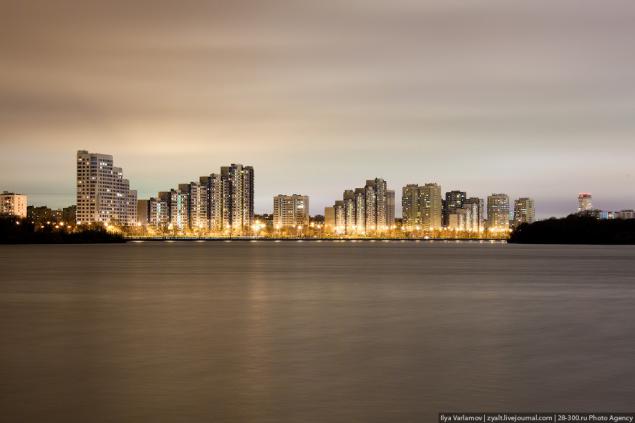
10. 34th "B" neighborhood district "Printers."
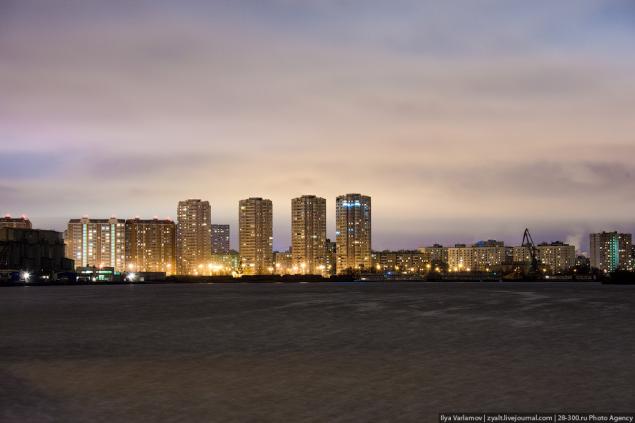
11.
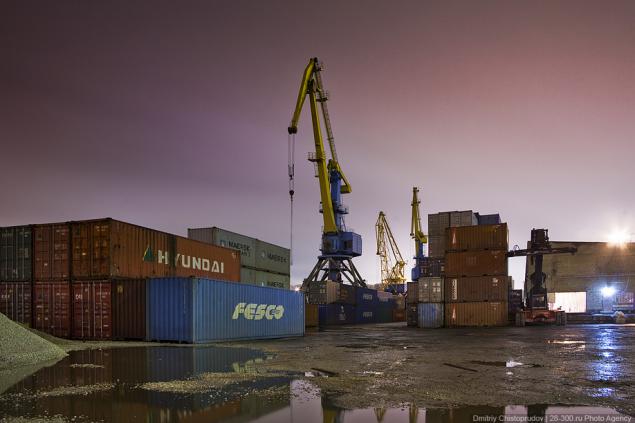
12. By the end of the war there already are 5 and 4 floating gantry crane, pneumatic installation for handling grain. He began to act harbor tugboat fleet. And since 1945, Germany began to arrive trophy cranes 2-15 tons of the "Derik-Hoyst" steel barges (previously we had only wooden) factory "Tiger" on the 150 and 300 tons.
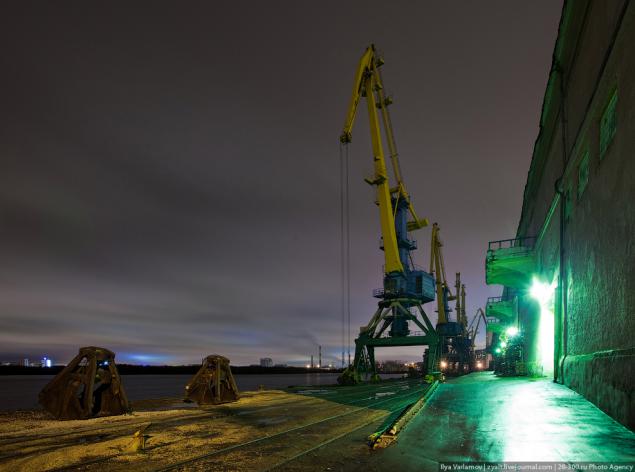
13. Below the Southern port in the swamp with the help of the dam, which discharged waste foundry ZIL breed Metrostroi and other ground prepared area of 12 hectares for the construction of new berths. Then in the southern port was put into operation 10 new gantry cranes. The volume of cargo increased by more than 4 times. An increase in the volume of housing construction in Moscow and require a significant increase in traffic through the port of building materials. Port successfully cope with the work.
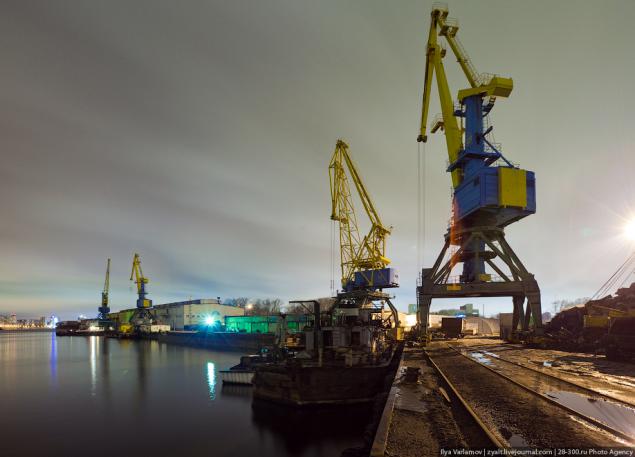
14. By 1980, the southern port cranes were mounted giants. Gantry crane "Condor" carrying capacity of 40 tons of cargo containers heavy international standard. Cranes "Ganz" and "Albatross" was carried out cargo operations with heavyweights, metals, bulk and container cargoes. Berths already stretched to 2,200 meters.
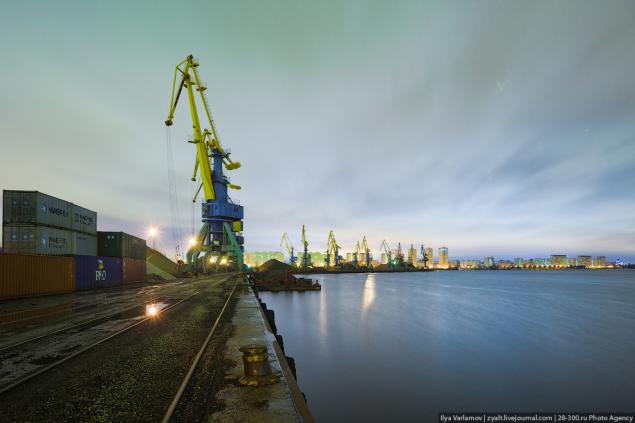
15.
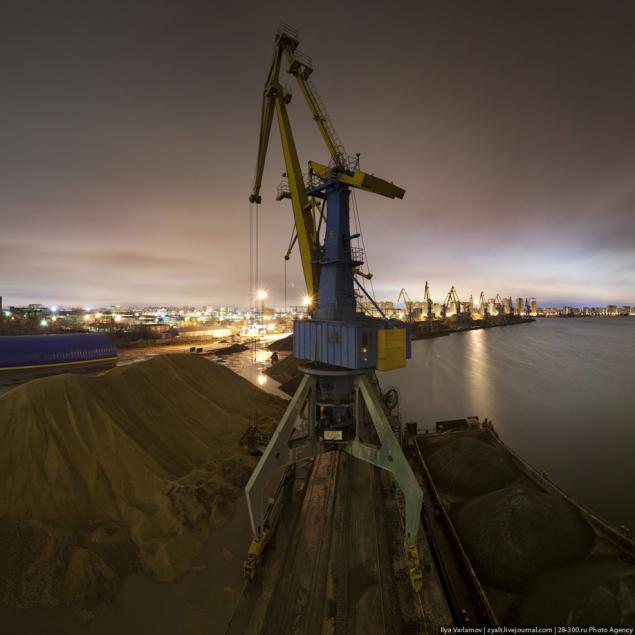
16.
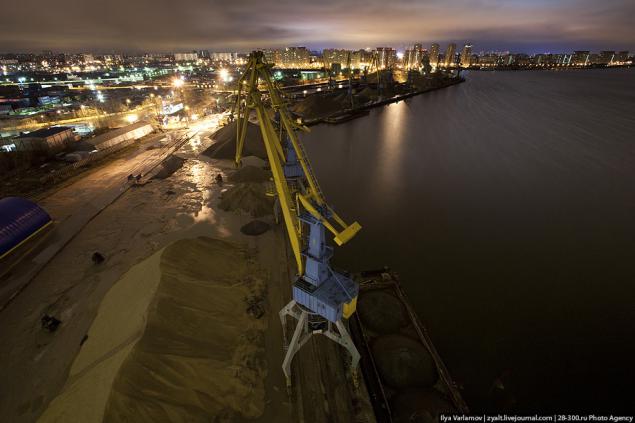
17.
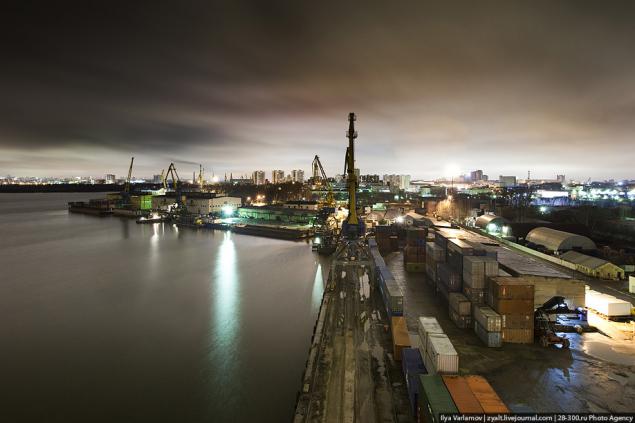
18.
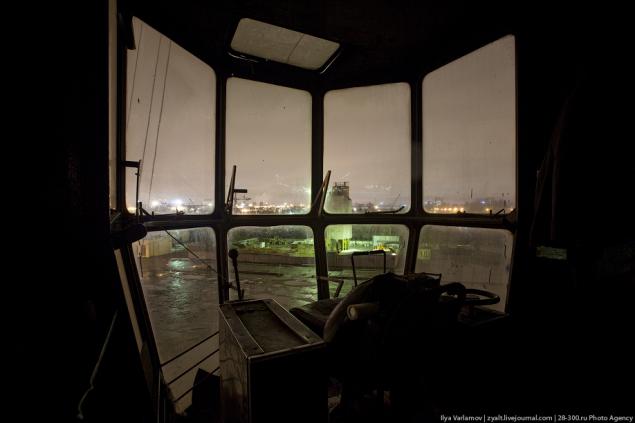
19. The land area occupied by the port is 29, and 1 of 6 hectares, 1 hectare wharf "Printers." Quay wall, the length of 2178 meters, is divided into 17 specialized berths, equipped by 32 gantry cranes 5 to 40 tons. The total warehouse space - 87,000 square meters.
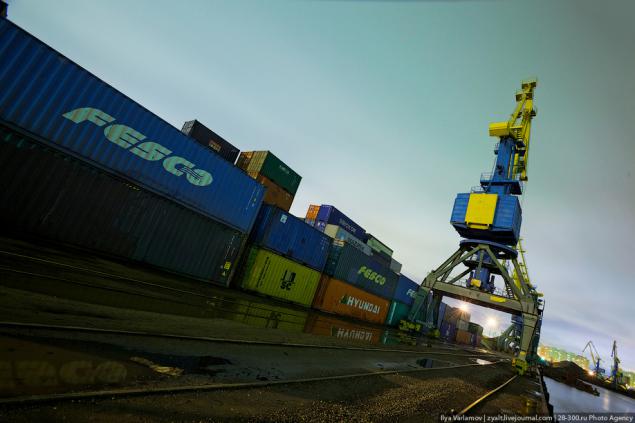
20. For goods arriving in the direct and mixed rail and water transport, in the port has rail and road access path that allows direct cargo transshipment.
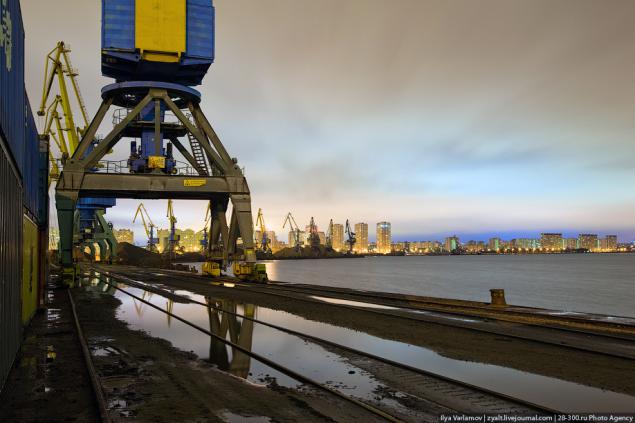
21. The complex of port handling of containers arriving by river transport is the largest in Moscow.
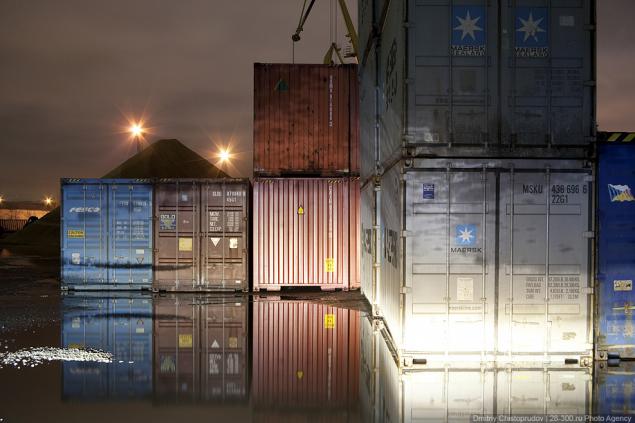
22.
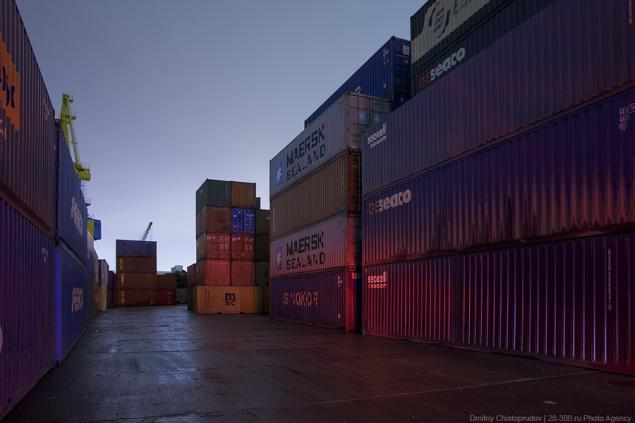
23.
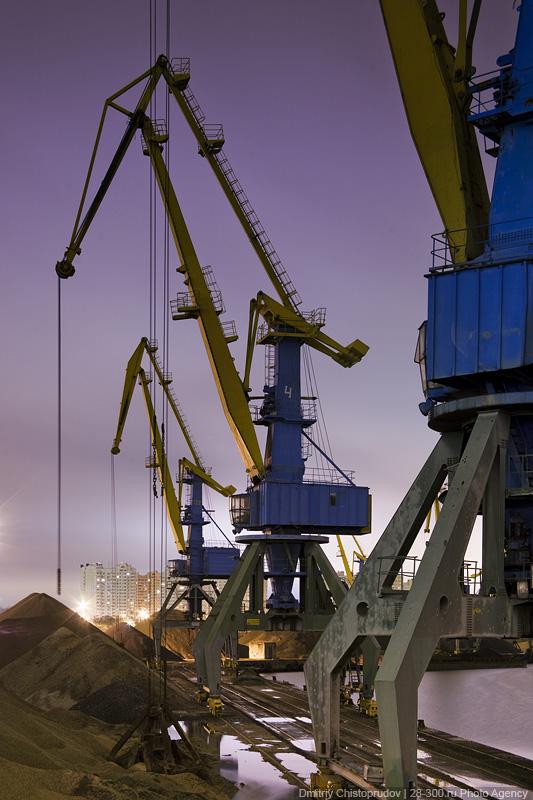
24.
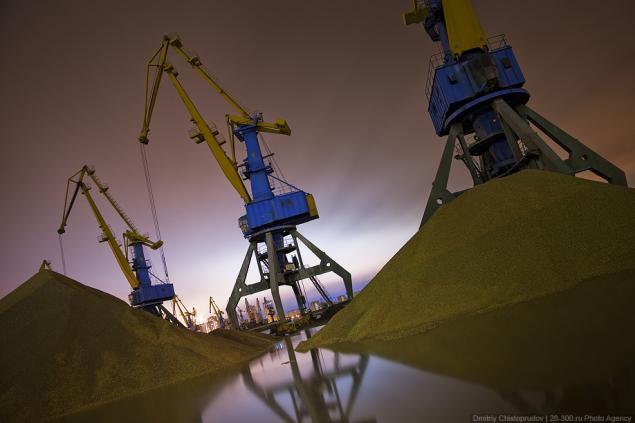
25
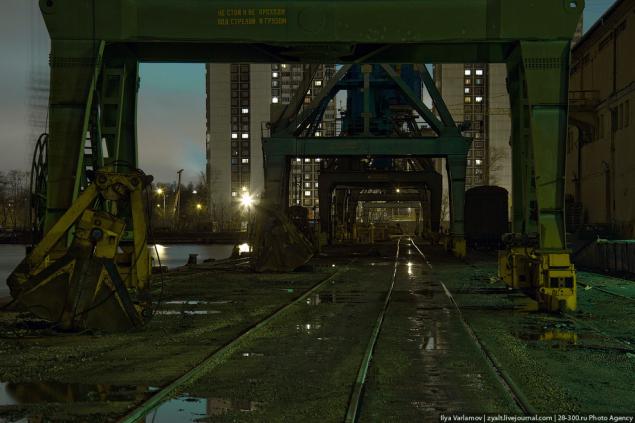
Source:
25 ph via Ilya Varlamov
1. Today South Port - this is one of the major Moscow thoroughfares

2. As a result of reconstruction Moskvoretskaya river system by the end of the 20s are all available berths were merged into 12 trucks.

3. The construction of the South Port was conducted in a large South Harbour Moscow River, where the winter could accommodate up to 350 for the repair of ships. However, to build it was very difficult because of the impassable swamps Sukin swamp. As with the creation of all other objects Canal. Moscow, the construction of the Southern ports was carried out by the NKVD Gulag. The whole area of construction has become a "zone." It is shielded by a fence of two rows of barbed wire and put a tower with "the guard." Especially carefully guarded area in which the hospital is now located № 53. There were barracks prisoners.

4. Initially, the port has not been mechanized. All shipments to traditional way in Russia - in bags on zapleche. Therefore, the court long idle in port (up to 50% of the total work). With the introduction of the port cargo handling equipment is increasingly mechanized. In the photo the port administration building.

5. The first trial in the South Harbour berths came in the autumn of 1940. They brought Muscovites vegetables and potatoes from the fields near Moscow, and from the banks of the Oka River. During the war every day in Moscow in South Port received grain, food and firewood (10-12 thousand tons per day).

6. When the war began from the port workers in the army were mobilized, almost all porters, machine operators and engineers, they were replaced by their wives and children. Here, on the supply base of the Western Front, came to work after recovering wounded soldiers.

7.

8. The water area of South Port, the widest in the Moscow section of the main river bed. Moscow. The length of 2, 5 km and a width of 0, 7 km (east) or even to 0, 9 km (at the junction Novinkovskogo sleeves and Kozhukhovsky backwater). The right-bank part of the area, separated elongated island called Nagatinsky sleeve. The absolute height of the shoreline 120 m.

9. The complex of three apartment buildings on the basis of a series of P-3 "Sails". Three groups of white and blue houses of variable height form a picturesque silhouette rhythmic Nagatinsky waterfront. Block-section variable height from 10 to 23 floors

10. 34th "B" neighborhood district "Printers."

11.

12. By the end of the war there already are 5 and 4 floating gantry crane, pneumatic installation for handling grain. He began to act harbor tugboat fleet. And since 1945, Germany began to arrive trophy cranes 2-15 tons of the "Derik-Hoyst" steel barges (previously we had only wooden) factory "Tiger" on the 150 and 300 tons.

13. Below the Southern port in the swamp with the help of the dam, which discharged waste foundry ZIL breed Metrostroi and other ground prepared area of 12 hectares for the construction of new berths. Then in the southern port was put into operation 10 new gantry cranes. The volume of cargo increased by more than 4 times. An increase in the volume of housing construction in Moscow and require a significant increase in traffic through the port of building materials. Port successfully cope with the work.

14. By 1980, the southern port cranes were mounted giants. Gantry crane "Condor" carrying capacity of 40 tons of cargo containers heavy international standard. Cranes "Ganz" and "Albatross" was carried out cargo operations with heavyweights, metals, bulk and container cargoes. Berths already stretched to 2,200 meters.

15.

16.

17.

18.

19. The land area occupied by the port is 29, and 1 of 6 hectares, 1 hectare wharf "Printers." Quay wall, the length of 2178 meters, is divided into 17 specialized berths, equipped by 32 gantry cranes 5 to 40 tons. The total warehouse space - 87,000 square meters.

20. For goods arriving in the direct and mixed rail and water transport, in the port has rail and road access path that allows direct cargo transshipment.

21. The complex of port handling of containers arriving by river transport is the largest in Moscow.

22.

23.

24.

25

Source:

